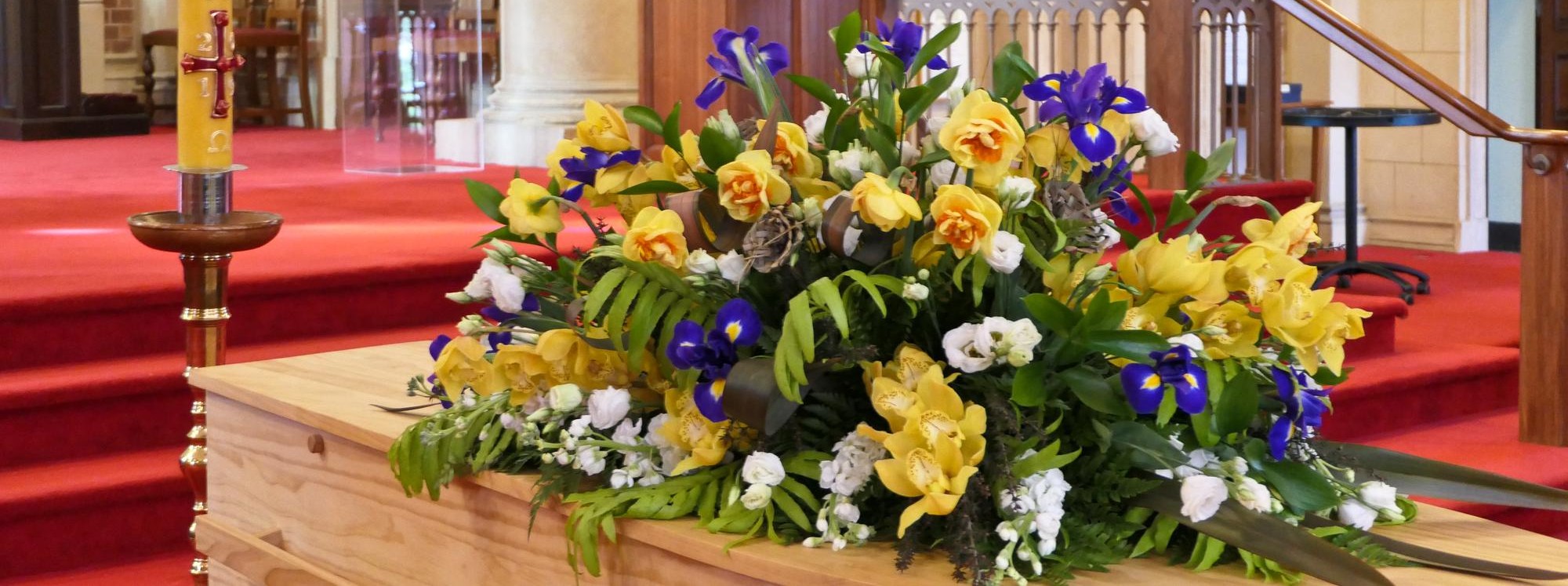Celebrating Death
National Liturgical Council

Death touches everyone at some time, whether this is the prospect of one’s own death or the death of a family member, acquaintance or friend. Death comes regardless of age, gender or culture. It may come as a slow deterioration or with the swiftness of a car accident.
At the time of death in the face of great emotion it is difficult to know how to pray in farewell and for the comfort of family and friends. Whenever and however death arrives, the Christian community is called to celebrate the reality of the sadness of separation and enduring hope in the resurrection.
Celebrating Death
There is a variety of rituals offered by the Church in the Order of Christian Funerals (OCF). These rituals provide ways to pray for the deceased person and to accompany those who are grieving. They help to spell out the church’s understanding of death and the role of the Christian community towards those who have died and those who mourn their death. The rituals provide for all in the Christian community: infants and children, youth, married couples, singles, elderly people, the pope, bishops, religious, priests, deacons, catechumens.
The scripture readings and prayers encompass those who die suddenly, or after a long illness, through accident, violence or suicide.
There are also readings and prayers for unbaptised children and stillborn babies. With the permission of the Bishop, "the church’s funeral rites may be celebrated for a baptised member of another Church or ecclesial community provided this would not be contrary to the wishes of the deceased person and provided the minister of the Church or ecclesial community in which the deceased person was a regular member or communicant is unavailable" (OCF 18).
Parishioners need to be well informed about the rites so they can exercise this ministry of consolation at a time when people are most fragile. Sorrow and struggle are recognised along with Christian joy in the gift of eternal life.
From Baptism to Eternal Life
"In the face of death, the church confidently proclaims that God has created each person for eternal life and that Jesus, the Son of God, by his death and resurrection, has broken the chains of sin and death that bound humanity" (OCF 1).
Thus the death of a Christian is seen as a completion of the earthly journey begun in Baptism. In the Rite of Baptism a person is welcomed into the Christian community with the sign of the cross on their forehead, a reminder of Christ’s death.
The person is immersed in Christ through the pouring of water, becoming ‘christened’. They are born into the mystery of Christ’s life, death and resurrection, the paschal mystery.
The white garment placed on the person signifies the beginning of a new dignity in Christ, which is to be brought ‘unstained into the everlasting life of heaven.’ (Rite of Baptism 63)
The light of the paschal candle shared with the newly baptised is a reminder to keep this light burning so that at the end of life this person may be ready to ‘go out to meet Christ with all the saints in the heavenly kingdom’. (Rite of Baptism 64)
Water, a white pall and the paschal candle are used in the funeral liturgies to remind the community of this journey from baptism to eternal life. Baptism is the moment of joining with the great paschal mystery – the life, death and resurrection of Christ who calls us into eternity. ‘Christian hope faces the reality of death and the anguish of grief but trusts confidently that the power of sin and death has been vanquished by the risen Lord.’ (OCF 8)
The funeral rites celebrate this hope while praying for both the deceased and mourners. The Christian community is a visible sign of God’s love and care in the time of mourning.
This article was originally published in ‘Christian Funerals’. © Diocese of Parramatta. 2004, 2007. Reprinted with permission.
